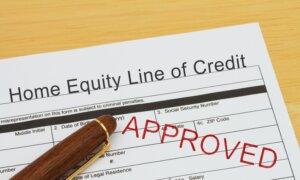The average fixed rate on a 30-year mortgage, which fell below 3 percent in mid 2020, reached 6.77 percent in February 2024, according to the Federal Reserve Bank of St. Louis. So if you bought a home between 2011 and early 2022, you may be thinking twice about moving and giving up your loan with a low fixed rate.
But people with a variable-rate home equity line of credit, often called a HELOC, aren’t shielded from rate increases. Many homeowners take out HELOCs, often to finance renovations. The number of HELOCs originated in the second quarter of 2023, for example, reached about 284,600, nearly a 13 percent increase over the prior quarter, according to ATTOM, a provider of property data.
The average rate for a HELOC has jumped from less than 4 percent to about 9 percent during the rate-hiking cycle. As a result, these loan payments may take up a much bigger part of your budget than they did when you first borrowed the money.
“If your HELOC rate has risen to the point where you can no longer keep up with it, reach out to your lender right away to discuss your options,” says Jacob Channel, senior economist for LendingTree, an online lending marketplace. “In some instances, your lender may be able to offer you wiggle room, such as a rate adjustment, that can help you keep up with your bills.”
You may also consider changing the way you use your HELOC. When rates were low, some people used these lines of credit as a back-up emergency fund rather than keep more money in a savings account with low interest. But now that you can earn more than 5 percent on some high-yield savings accounts, you could come out ahead by shifting funds to one of those accounts instead.
Shop around for the best deal on your savings, says Mari Adam, a certified financial planner in Boca Raton, Florida. “If you have your emergency fund in an account with a rate of just over zero percent and switch to one with a yield of more than 5 percent, that’s a difference of hundreds or thousands of dollars per year in interest earned.”
You can also compare rates at DepositAccounts.com.








